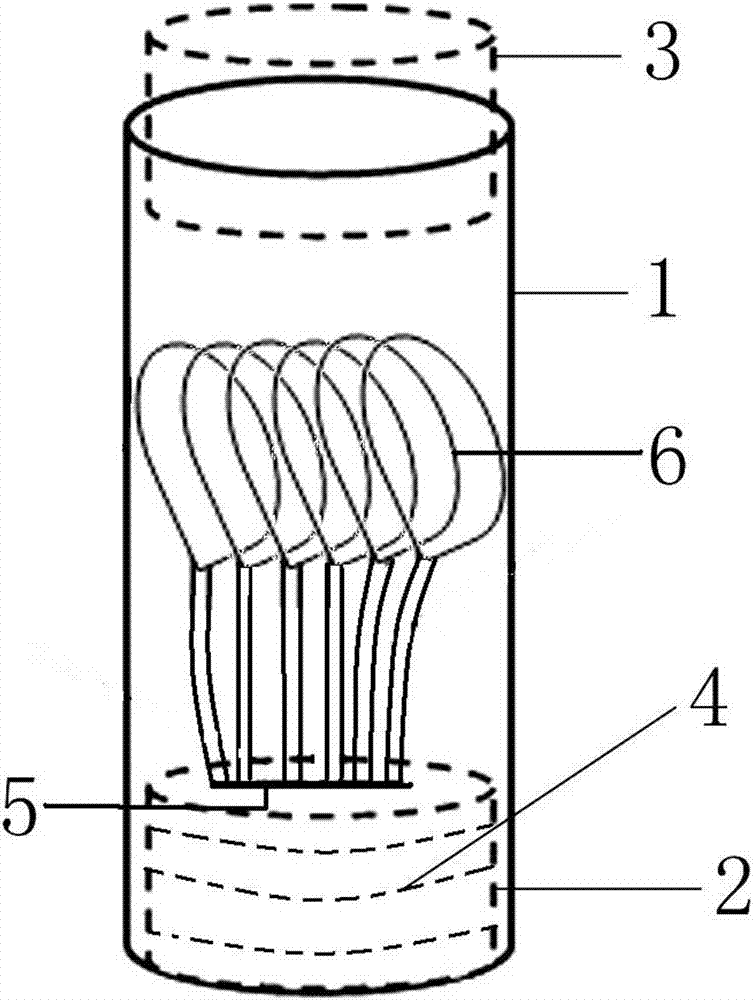Method of rearing single-head diamondback moth indoors
A diamondback moth, single-head technology, applied in botany equipment and methods, culture medium, animal feed, etc., can solve the problems of unfavorable operation and experiment due to the large overall volume of the device, affecting the lifespan of diamondback moth adults, and unable to meet the needs of diamondback moth larvae, etc. , to achieve the effects of reducing abnormal death, avoiding interference from natural enemies, and preventing premature withering or yellowing
- Summary
- Abstract
- Description
- Claims
- Application Information
AI Technical Summary
Problems solved by technology
Method used
Image
Examples
experiment example 1
[0025] Experimental example 1: adopt the method described in the present invention and the raising device mentioned in the background technology to carry out the control experiment of raising, test method: each 30 ovums newly produced in diamondback moth within 6 hours after birth were respectively according to the method described in the present invention Raise with the raising method mentioned in the background technology. The development period and survival of eggs, larvae and pupae, pupae weight and adult life expectancy were compared between the two feeding methods.
[0026] Result of the test: the results are shown in Table 1-2. The results show that the rearing device and method of the present invention significantly improve aspects such as diamondback moth survival, lifespan, pupa weight, etc. than the original method, and the developmental duration of different stages of diamondback moth is higher than that of the original method. slightly shortened. After the invent...
experiment example 2
[0031] Experimental example 2: using plant nutrient solution in the method of the present invention and the existing method of cultivating cabbage leaves with clear water mentioned in the background technology, and comparing the growth of cabbage seedlings under the two methods of cultivating cabbage leaves.
[0032] Experimental method: 30 pieces of cabbage leaves with basically the same growth height (about 5 cm) and tenderness (tender green) were respectively cultured at the seedling stage of cabbage according to the method of the present invention and the existing method. Compare the subsequent growth of cabbage seedlings.
[0033] Experimental results: the results are shown in Table 3. The results show that the cultivation of cabbage leaves with plant nutrient solution in the method of the present invention can ensure better growth of cabbage leaves for a long time (about 9 days).
[0034] According to the requirements of the growth of cabbage leaves, the present inventio...
PUM
 Login to View More
Login to View More Abstract
Description
Claims
Application Information
 Login to View More
Login to View More - R&D
- Intellectual Property
- Life Sciences
- Materials
- Tech Scout
- Unparalleled Data Quality
- Higher Quality Content
- 60% Fewer Hallucinations
Browse by: Latest US Patents, China's latest patents, Technical Efficacy Thesaurus, Application Domain, Technology Topic, Popular Technical Reports.
© 2025 PatSnap. All rights reserved.Legal|Privacy policy|Modern Slavery Act Transparency Statement|Sitemap|About US| Contact US: help@patsnap.com



